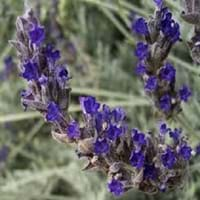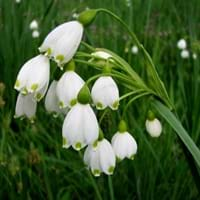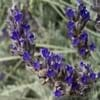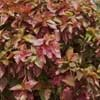Life Span
Perennial
Perennial
Type
Tender Perennial
Bulb or Corm or Tuber
Origin
Mediterranean
Europe, Mediterranean, Northern Africa, Western Asia
Types
Lodden Blue, Royal Velve, Melissa, Sachet, Sharon Roberts etc
Not available
Number of Varieties
Not Available
Habitat
Grassland, Hillside, Rocky areas
Damp shady woods, Hedgebanks, Mediterranean region
USDA Hardiness Zone
8-10
Not Available
AHS Heat Zone
12-1
Not Available
Sunset Zone
4, 5, 6, 7, 8, 9, 10, 11, 12, 13, 14, 15, 16, 17, 18, 19, 20, 21, 22, 23, 24
21,22
Habit
Clump-Forming
Clump-Forming
Minimum Width
Not Available
Flower Color
Blue Violet
White, Light Pink
Flower Color Modifier
Not Available
Bicolor
Fruit Color
Brown
Not Available
Leaf Color in Spring
Sea Green, Gray Green
Green
Leaf Color in Summer
Sea Green, Gray Green
Light Green
Leaf Color in Fall
Sea Green, Gray Green
Several shades of Green
Leaf Color in Winter
Gray, Silver
Light Green
Leaf Shape
Oblong
Strap shaped
Plant Season
Spring, Summer, Fall, Winter
Spring, Summer, Fall, Winter
Sunlight
Full Sun, Partial Sun
Full Sun, Partial Sun, Partial shade
Type of Soil
Clay, Loam, Sand
Loam, Sand
The pH of Soil
Neutral, Alkaline
Acidic, Neutral, Alkaline
Soil Drainage
Well drained
Well drained
Bloom Time
Indeterminate
Early Spring, Spring, Late Spring, Early Summer, Late Summer, Winter, Late Winter
Tolerances
Drought, Salt
Drought, Light Frost, Variety of soil types
Where to Plant?
Ground
Ground, Pot
How to Plant?
Seedlings, Stem Planting, Transplanting
Divison, Seedlings, Seperation
Plant Maintenance
Medium
Low
Watering Requirements
Does not require lot of watering, Over-watering can cause leaf problems or root diseases, Water when soil is dry
Needs less watering
In Summer
Lots of watering
Lots of watering
In Spring
Moderate
Moderate
In Winter
Average Water
Average Water
Soil pH
Neutral, Alkaline
Acidic, Neutral, Alkaline
Soil Type
Clay, Loam, Sand
Loam, Sand
Soil Drainage Capacity
Well drained
Well drained
Sun Exposure
Full Sun, Partial Sun
Full Sun, Partial Sun, Partial shade
Pruning
Do not prune during shooting season, Prune after flowering, Prune if you want to improve plant shape, Prune in late summer or fall, Prune in spring, Prune to control growth
Remove damaged leaves, Remove dead branches, Remove dead leaves
Fertilizers
All-Purpose Liquid Fertilizer
Bulb fertilizer
Pests and Diseases
Armillaria mellea, Cecidomia, Cuscuta, Gray mold, Meligetes, Phoma, Rhizoctonia Root Rot, Sophronia Humerella
Narcissus Bulb Fly, Slugs
Plant Tolerance
Drought
Drought, Light Frost, Variety of soil types
Flower Petal Number
Single
Single
Fragrant Bark/Stem
Yes
No
Foliage Texture
Fine
Fine
Foliage Sheen
Matte
Matte
Attracts
Butterflies
Ants, Bees, pollinators
Allergy
Diarrhea, Headache, Itchy eyes, Nausea, Vomiting
Not Available
Aesthetic Uses
Beautification, Bouquets, Showy Purposes, Used for decorating walls, fences, gates, hedges, etc.
Beautification, Bouquets, Cottage Garden, Ground Cover, Showy Purposes
Beauty Benefits
Not Available
Anti-ageing
Environmental Uses
Air purification
Air purification
Medicinal Uses
Acne, Skin irritation
Alzheimer’s Disease
Part of Plant Used
Flowers
Flowers, Root
Other Uses
Oil is used for aromatherapy, Oil is used in perfume, soaps, creams, etc., Showy Purposes, Used As Food, Used as Ornamental plant, Used for fragrance
Used as Ornamental plant
Used As Indoor Plant
No
No
Used As Outdoor Plant
Yes
Yes
Garden Design
Container, Herb / Vegetable, Mixed Border, Rock Garden / Wall
Alpine, Container, Cutflower, Lawns and Turf, Mixed Border, Rock Garden / Wall, Wildflower
Botanical Name
LAVANDULA ginginsii
Leucojum aestivum
Common Name
Lavender
Leucojum, summer snowflake
In Hindi
Lavender
Leucojum
In German
Lavendel
Leucojum
In French
Lavande
Leucojum
In Spanish
Lavanda
Leucojum
In Greek
λεβάντα
Leucojum
In Portuguese
Lavanda
Leucojum
In Polish
Lawenda
Leucojum
In Latin
Lavendula
Leucojum
Phylum
Tracheophyta
Magnoliophyta
Class
Magnoliopsida
Liliopsida
Family
Lamiaceae
Liliaceae
Clade
Angiosperms, Asterids, Eudicots
Angiosperms, Monocots
Tribe
Lavanduleae
Not Available
Subfamily
Nepetoideae
Amaryllidoideae
Importance of Goodwin Creek Grey and Leucojum
Want to have the most appropriate plant for your garden? You might want to know the importance of Goodwin Creek Grey and Leucojum. Basically, these two plants vary in many aspects. Compare Goodwin Creek Grey and Leucojum as they differ in many characteristics such as their life, care, benefits, facts, etc. Every gardener must at least have the slightest clue about the plants he wants to plant in his garden. Compare their benefits, which differ in many ways like facts and uses. The medicinal use of Goodwin Creek Grey is Acne and Skin irritation whereas of Leucojum is Alzheimer’s Disease. Goodwin Creek Grey has beauty benefits as follows: Not Available while Leucojum has beauty benefits as follows: Not Available.
Compare Facts of Goodwin Creek Grey vs Leucojum
How to choose the best garden plant for your garden depending upon its facts? Here garden plant comparison will help you to solve this query. Compare the facts of Goodwin Creek Grey vs Leucojum and know which one to choose. As garden plants have benefits and other uses, allergy is also a major drawback of plants for some people. Allergic reactions of Goodwin Creek Grey are Diarrhea, Headache, Itchy eyes, Nausea and Vomiting whereas of Leucojum have Not Available respectively. Having a fruit bearing plant in your garden can be a plus point of your garden. Goodwin Creek Grey has no showy fruits and Leucojum has no showy fruits. Also Goodwin Creek Grey is flowering and Leucojum is not flowering . You can compare Goodwin Creek Grey and Leucojum facts and facts of other plants too.





